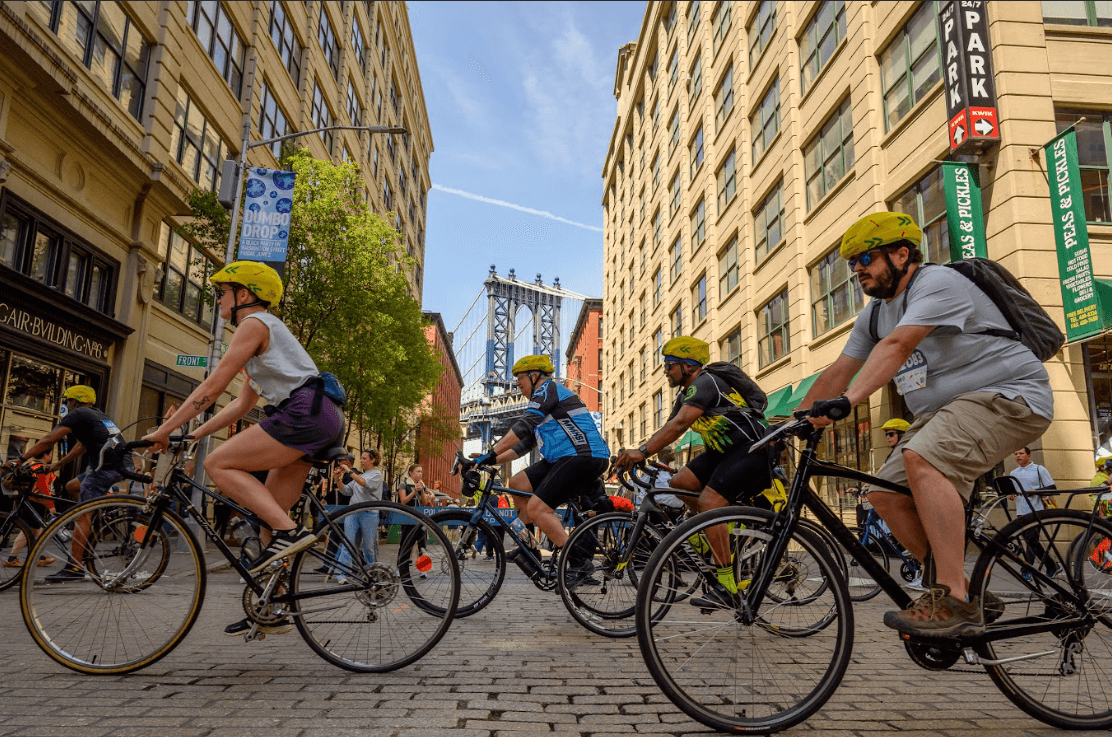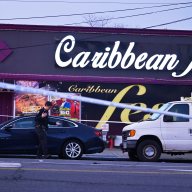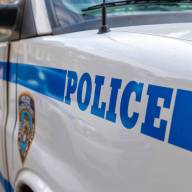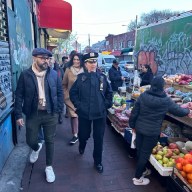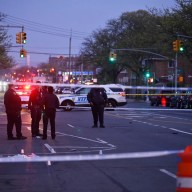There are some jobs that just have to be done in the middle of the night. Erecting the major steel work as part of the refurbishment of the Throgs Neck Bridge is one of them
This night, or more correctly at 2 a.m. on Tuesday October 6, a crew of structural steelworkers were on a catwalk, clambering over, under and around a massive girder spanning the northbound side of the Cross Island Parkway.
Crews are highly specialized – as is necessary when shoving around killer slabs of steel, at a possibly-fatal distance above the pavement.
Everything about working steel carries a risk – starting with cutting away old parts with acetylene torches – as evidenced by a July fire under the bridge decking. In addition to snarling traffic for weeks, the fire may have mandated the replacement girder that was going up this night.
Earlier, flatbed trailer trucks had delivered loads that were assembled on the ground and securely bolted together to form this major deck support.
The finished, thoroughly inspected structural member was then clamped with giant tongs and hoisted into the air on cables thicker than most men’s thumbs.
Even after a highly expert operator swung the multi-ton load to within a fraction of an inch from its final position, someone remains at the controls, in case some warning sign might offer the men on the catwalk a few seconds head start on disaster.
The scene is bathed in a blue-white glare from the banks of high intensity, pizza-sized work lamps atop tall masts. Despite this, the workers who actually fit the pieces together perform their tasks where the light often doesn’t reach.
They wear lanterns on their steel construction helmets, not unlike coal miners; working under the ground, while these men work above it.
In an age of computerized almost-everything, the actual assembly is done much as it was on the first steel structures.
Workers with pointed steel bars called “drift pins” thread them into mating holes on the pieces. Then with brute force, leverage and heavy hammers, they pound and grunt everything into exact alignment.
Other workers thread together the numerous – and enormous – nuts and bolts that will bind the joint, draw them tight with ratchet wrenches and torque down everything to the engineers’ specifications.
All this is done under the wary eye of supervisors and inspectors, as well as the casual gaze of the teamsters who delivered the truckloads and now wait for their police escort from the scene.
In the post-9/11 universe even photographing a bridge is frowned upon; getting an interview with a worker on site is unlikely – everyone is security conscious.
A lanky, sandy-haired man in a hard hat approached when the first picture was taken. “Are you supposed to be here – oh, press,” said Jim, a Marlboro smoker who said he was a truck driver.
“You know you’re not supposed to take pictures of the bridge,” he said, over the clanging and banging of assemblers “persuading” the bolt holes to align. “There are police dressed up like ordinary guys, looking out for people,” he added with a blue-eyed gaze that made him seem very much like a cop dressed up as an “ordinary person.”
For a moment, the clatter subsided; muffled commands and the cricket-like clicking of a ratchet wrench could be heard.
—
In honor of The Queens Courier’s 24 years of serving you, our readers, and the communites you live in, we bring you a look at 24-hour Queens. We shadowed some of the people who work in and watch over the borough through the night, and, in addition, we have listed the places that you can go before the sun comes up if you need gas, feel like bowling, or get the munchies.
Read our other 24-Hour Queens Features by clicking below:











